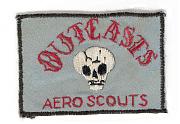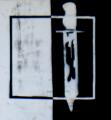To get from point A to point B without walking? To send a unit to conduct a reconnaissance of a designated area? Raid? Troop insertion? Strike on a high value target? Dozens of reasons...Your prerogative. I think you're quite wrong and it seems speaking without full knowledge -- unless you in ZA have better sources than I do which includes a son with a tour in Iraq and two in Afghanistan and friends and neighbors who are there now.I believe that the families of troops killed by IEDs should explore their legal options...Wrong. Generals and Colonels are captives of their pasts. LTCs and below not so much; they, the Kids, have have always been the bringers of military change, only rarely does a talented General rise above the mediocrity that is demanded of them in order to survive in a highly competitive environment.It is seldom up to the 'kids' to change things that lies with the generals and the colonels. The question is how many 'kids' must die before the generals and the colonels to ring the changes?
As a former 2d Lieutenant once said: "It did not take long for us to get a list of possible camps from these recce pilots and would visit them one by one with the fire force to tick them off one way or the other."
Fortunately for the kids -- I'm almost 80, so all those 50 year old Colonels and Sergeant Majors are kids to me -- we now have UAVs to do that aerial recce bit. The system works. Imperfectly as always and in every Army the world has ever seen due to human fallibility -- but it works.Again we agree. I have seen no evidence that is not the case in Afghanistan. Do you have evidence to the contrary or is all this based on partial information and speculation?In any war, in any terrain, in any theater it is surely poor/weak/incompetent leadership not to select lines of advance so as to avoid 'danger areas' and if unavoidable to use appropriate tactical maneuver to prevent troops being caught in open ground by enemy fire.Er, no, that's incorrect. What I said was: "Dunno, probably not. I told you our training was marginal..."I asked the question earlier somewhere as to whether "crack and thump" demonstrations are a regular part of training and the answer was for the best units yes, for the rest maybe.You take a lot of standing broad jumps at wrong conclusions. Probably about half the Privates in most units rotating to Afghanistan will have a previous combat tour, possibly two. Virtually all the NCOS and Officers above 2d LT will have at least a tour, many will have several -- some folks with six tours are there now.So now in a situation where whole raw units are brought in at the same time for a 'tour of duty' it is likely that the vast majority of the soldiers have had no combat experience. So how would they have the experience to know what constitutes 'effective enemy fire' and what constitutes the odd stray or way off target round passing overhead?
It must surely be a concern that raw troops can decide for themselves when to take cover or even open fire (when not at very close range) ... and yes that IS the corporals job being to command his section and not just look after himself. Surely?
The US army doesn't use Corporals, the Marines do. Both services use Fire Teams led by a Corporal in the Marines, A Sergeant in the Army. Those Teams are assigned to a Squad (= UK section) led by a marine sergeant or Army Staff Sergeant. Most Fire Team leaders will hav a tour or two, some will have more. The average Squad Leader probably has three or four combat tours (7 months for Marines, a year for the Army).
Our training isn't great (In my opinion) but it is adequate; you asked about crack and thump training -- in US usage that is purely a technique for range estimation. It was taught in WW I and until post Viet Nam -- the ranges in Viet Nam were so short and the number of weapons being fired in most fights made it ineffective. It is often be taught in units and as you inferred, good units will do it and as units go through cycles due to personnel turnover, most are good at one time or another. It may be taught in institutional training now, they've added a bunch of stuff in the last few years. I doubt it, a real fire fight doesn't pose much need for it though it is handy for scouts and to estimate range to artillery or mortars.
So you asked about an esoteric technique which has some value but not enough to warrant spending initial entry time on it for the value derived.
What you did not ask about was live fire training, of which we do a great deal, in initial entry institutional training, in unit sustainment training and heavily in pre-deployment training as well as in refresher training conducted in theater. I suspect US troops fire far more than most armies and there's plenty of training wherein the troops learn to diffrentiate near and far misses from the thud of a hit -- even if they don't do crack and thump routinely to ascertain the approximate range to a fired weapon...
It is not a concern to me that troops can decide for themselves -- occasionally with a little NCO assistance -- to seek cover; in fact, I wouldn't have it any other way. You have to give troops responsibility, no need to treat them like children. We tend to value life so we encourage taking cover then deciding whether one needed to do that. It takes about two firefights for the average person to sort that out properly. As they say, it isn't rocket science . It would concern me a great deal if NCO direction was constantly needed on that and other basic skills. In a real firefight, there's way too much noise and confusion for commands to be heard so the troops have to know what to do. We do generally get them to that point before deploying them.
Somehow you've arrived at a number of erroneous conclusions it seems...












Bookmarks